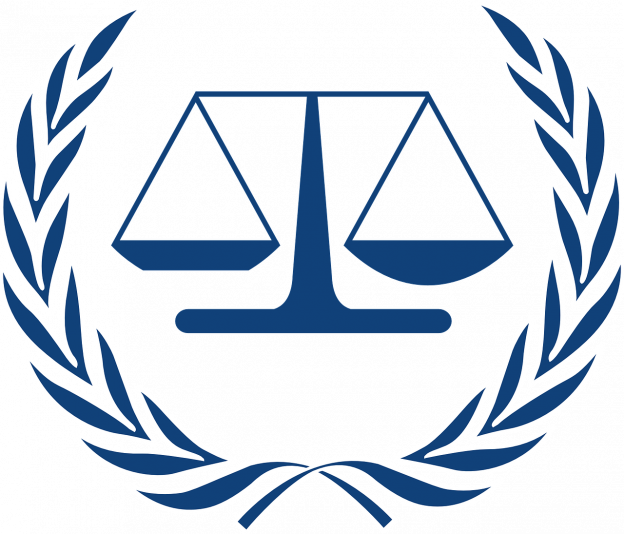If you find yourself in need of legal advice or assistance related to employment law, then look no further. Employment Law Lawyers is here to provide comprehensive and exhaustive articles on all aspects of this field. From understanding your rights as an employee to navigating complex workplace issues, our goal is to address your concerns directly and offer the guidance you seek. With our experienced attorney, Jeremy Eveland, on your side, you can rest assured knowing that you have a trusted advocate by your side. So, if you’re looking for an attorney who can provide reassurance, advice, and empathy, give us a call today. Let us help you navigate the complexities of employment law and find a resolution that works for you.
What is Employment Law?
Employment law is a branch of law that focuses on the legal rights and obligations of employees and employers in the workplace. It covers a wide range of issues, including hiring practices, workplace safety, discrimination, harassment, wages and hours, benefits, and termination. Employment law aims to protect the rights of employees and ensure fair and equal treatment in the workplace.
Overview of Employment Law
Employment law encompasses various federal, state, and local laws, as well as court decisions and administrative regulations. It sets the standards for how employers should conduct themselves and how employees should be treated. These laws outline the rights and responsibilities of both parties and provide a framework for resolving disputes and conflicts that may arise in the employment relationship.
Why Employment Law is Important
Employment law plays a crucial role in ensuring fairness and equality in the workplace. It protects employees from discrimination, harassment, and unfair treatment, and it establishes standards for minimum wages, maximum working hours, and safe working conditions. Without employment law, employees would be vulnerable to exploitation and abuse, and there would be no legal recourse for addressing workplace injustices.
Types of Employment Law Cases
Employment law cases can involve a wide range of issues. Some common types of cases include:
Discrimination and Harassment
Discrimination occurs when an employee is treated unfairly based on a protected characteristic, such as race, gender, age, disability, or religion. Harassment, on the other hand, involves unwelcome conduct that creates a hostile or intimidating work environment. Employment law protects employees from discrimination and harassment and provides avenues for seeking remedies and holding employers accountable.
Wrongful Termination
Wrongful termination refers to the unlawful firing of an employee. It may occur when an employee is terminated for discriminatory reasons, in retaliation for exercising their legal rights, or in violation of an employment contract or public policy. Employment law provides recourse for employees who have been wrongfully terminated, including reinstatement, compensation, and other remedies.
Unpaid Wages and Overtime
Unpaid wages and overtime violations occur when employers fail to pay employees for the hours they have worked or fail to properly compensate them for overtime hours. Employment law establishes minimum wage and overtime requirements and provides mechanisms for employees to recover unpaid wages and seek penalties against non-compliant employers.
Retaliation
Retaliation occurs when an employer takes adverse action against an employee for engaging in protected activity, such as filing a complaint, participating in an investigation, or asserting their legal rights. Employment law prohibits retaliation and provides remedies for employees who have been retaliated against.
Family and Medical Leave Act
The Family and Medical Leave Act (FMLA) entitles eligible employees to take unpaid, job-protected leave for certain family and medical reasons. Employment law ensures that employees are aware of their rights under the FMLA and protects them from retaliation for exercising those rights.
Whistleblower Protections
Whistleblower protections aim to encourage employees to report illegal or unethical activities in the workplace without fear of retaliation. Employment law provides safeguards for whistleblowers, including protection from termination, demotion, harassment, and other adverse actions.
Benefits of Hiring an Employment Law Lawyer
When facing employment law issues, it is highly beneficial to hire an experienced employment law lawyer. Here are some key advantages of seeking legal representation:
Expert Legal Advice
Employment law can be complex and constantly evolving. A skilled employment law lawyer has in-depth knowledge and experience in navigating the legal landscape. They can provide expert advice tailored to your specific case, helping you understand your rights and options, and guiding you through the legal process.
Navigating Complex Laws
Employment laws can vary at the federal, state, and local levels, and understanding how they intersect and apply to your situation can be challenging. An employment law lawyer can navigate through the complexities of the laws, ensuring that your rights are protected and that you have the best chance of achieving a favorable outcome.
Maximizing Compensation
If you have suffered damages as a result of an employment law violation, an employment law lawyer can help you pursue maximum compensation for your losses. They will assess the value of your claim, gather evidence, and negotiate with the opposing party or their insurance company to secure a fair settlement. If necessary, they can also advocate for you in court to ensure you receive the compensation you deserve.
Protecting Employee Rights
Employment law lawyers are dedicated to protecting the rights of employees. They provide strong advocacy on behalf of their clients, holding employers accountable for their actions and seeking justice for any violations of employment laws. By hiring an employment law lawyer, you have someone on your side who will fight for your rights and work towards securing a fair and just resolution to your case.
How to Choose the Right Employment Law Lawyer
Choosing the right employment law lawyer is crucial to the success of your case. Here are some factors to consider when making your decision:
Experience and Expertise
Look for an employment law lawyer who has extensive experience in handling cases similar to yours. An experienced lawyer will have a deep understanding of employment laws, court procedures, and legal strategies. They will be able to anticipate and overcome challenges that may arise during your case.
Reputation and Track Record
Research the lawyer’s reputation and track record. Read reviews and testimonials from past clients, and inquire about their success rate in handling employment law cases. A lawyer with a strong reputation and a proven track record of success is more likely to deliver positive results in your case.
Client Testimonials and Reviews
Client testimonials and reviews can provide valuable insights into a lawyer’s competency, professionalism, and level of client satisfaction. Look for lawyers who have received positive feedback from their clients and have a reputation for providing excellent legal representation.
Communication and Accessibility
Effective communication is essential in any lawyer-client relationship. Choose a lawyer who is responsive and accessible, and who takes the time to listen to your concerns and answer your questions. A lawyer who communicates clearly and keeps you informed about the progress of your case will help you feel more confident and assured throughout the legal process.
Common Employment Law Issues
Employment law covers a wide range of issues that can arise in the workplace. Here are some common employment law issues that employees may encounter:
Discrimination and Harassment
Discrimination and harassment based on race, gender, age, disability, religion, or other protected characteristics are prohibited by employment laws. Employees who experience discrimination or harassment have the right to take legal action against their employers.
Wrongful Termination
Employees have the right to be terminated only for lawful reasons. Wrongful termination occurs when an employee is fired for discriminatory reasons, as retaliation, or in violation of an employment contract. Wrongfully terminated employees can seek remedies such as reinstatement, back pay, and compensation for damages.
Unpaid Wages and Overtime
Employers are required to pay employees for all hours worked and provide overtime pay when applicable. Unpaid wages and overtime violations occur when employers fail to properly compensate their employees. Employees can file claims to recover unpaid wages and seek penalties against non-compliant employers.
Retaliation
Employment laws protect employees from retaliation by their employers for engaging in protected activities, such as filing complaints or asserting their legal rights. Retaliatory actions can include termination, demotion, withholding of benefits, or other adverse actions. Employees who experience retaliation can seek remedies under employment laws.
Family and Medical Leave Act
The Family and Medical Leave Act (FMLA) provides eligible employees with the right to take unpaid, job-protected leave for certain medical and family reasons. Employers are required to comply with FMLA regulations and provide employees with the necessary leave. Employees who are denied their FMLA rights may have legal claims against their employers.
Whistleblower Protections
Whistleblowers are protected from retaliation by their employers for reporting illegal or unethical activities in the workplace. Whistleblower protections encourage employees to come forward and disclose wrongdoing without fear of adverse consequences. Employees who experience retaliation for whistleblowing can seek legal remedies.
The Employment Law Claims Process
When pursuing an employment law claim, understanding the claims process is essential. Here is an overview of the typical steps involved:
Initial Consultation
The first step is to schedule an initial consultation with an employment law lawyer. During this consultation, you will discuss the details of your case, provide any related documentation or evidence you have, and ask any questions you may have. The lawyer will assess your situation and provide an evaluation of your claims and legal options.
Investigation and Gathering Evidence
Once you decide to proceed with your claim, the lawyer will conduct a thorough investigation into the facts of your case. This may involve gathering additional evidence, interviewing witnesses, reviewing relevant documents, and assessing the strength of your claims. The lawyer will use this information to build a strong case on your behalf.
Negotiation and Settlement
Before proceeding to litigation, your lawyer may attempt to negotiate a settlement with the opposing party or their insurance company. This involves presenting your case and demands for compensation and engaging in negotiations to reach a mutually agreeable resolution. If a settlement is reached, your lawyer will guide you through the finalization process.
Litigation and Trial
If a settlement cannot be reached, your lawyer will file a lawsuit on your behalf and initiate the litigation process. This involves presenting your case in court, including presenting evidence, examining witnesses, and making legal arguments. Your lawyer will represent you throughout the trial, fighting for your rights and seeking a favorable outcome.
Appeals Process
If either party is dissatisfied with the trial court’s decision, they may choose to appeal the decision to a higher court. The appeals process involves filing an appeal, presenting legal arguments, and seeking a reversal or modification of the trial court’s decision. Your lawyer will guide you through the appeals process if necessary.
Important Factors in Employment Law Cases
When pursuing an employment law case, several factors can significantly impact the outcome. Here are some important factors to consider:
Statute of Limitations
Each claim has a specific time limit, known as the statute of limitations, within which it must be filed. It is crucial to be aware of these time limits as failure to file a claim within the prescribed timeframe may result in the loss of your legal rights. An employment law lawyer will ensure that your claim is timely filed and that all deadlines are met.
Burden of Proof
In employment law cases, the burden of proof is on the employee to demonstrate that their rights were violated or that the employer engaged in wrongful conduct. This typically requires providing sufficient evidence to support your claims. An employment law lawyer can help you gather the necessary evidence and build a compelling case to meet the burden of proof.
Employment Contracts and Agreements
If you have an employment contract or agreement, it can significantly impact the outcome of your case. Understanding the terms and provisions of your contract is essential when pursuing a claim. An employment law lawyer can review your contract and advise you on how it may affect your rights and remedies.
Employee Handbook Policies
Employee handbooks often contain important policies and procedures that can impact your rights and obligations as an employee. It is important to review these policies and ensure that your employer is following them. An employment law lawyer can review your employee handbook and help you understand your rights and obligations under the policies.
Witnesses and Documentation
Having credible witnesses and supporting documentation can strengthen your case. Witness testimony, emails, performance evaluations, photographs, and other relevant documents can provide evidence to support your claims. An employment law lawyer can help you identify and gather the necessary witnesses and documentation to build a compelling case.
Common Misconceptions about Employment Law
There are several common misconceptions about employment law that can cause confusion and misunderstanding. It is important to clarify these misconceptions to ensure a better understanding of employees’ rights and protections. Here are a few examples:
Employer Misclassification
One common misconception is that employers can classify workers as independent contractors to avoid providing benefits or complying with employment laws. However, misclassifying employees as independent contractors can violate employment laws and deprive workers of their rightful protections. It is important to understand the difference between an employee and an independent contractor and ensure proper classification.
At-Will Employment
Another common misconception is that employees can be fired for any reason or no reason at all because of the “at-will” employment doctrine. While at-will employment generally allows employers to terminate employees without cause, there are exceptions. Employment laws prohibit termination based on discriminatory reasons or retaliation for exercising legal rights. Understanding these exceptions is crucial for employees who believe they have been wrongfully terminated.
Confidentiality and Non-Disclosure Agreements
Employees often believe that confidentiality and non-disclosure agreements prevent them from reporting illegal activities or speaking out about workplace misconduct. However, employment laws protect whistleblowers, and confidentiality and non-disclosure agreements cannot be used to prevent employees from reporting illegal activities or disclosing information required by law. It is important to know your rights and understand the limitations of confidentiality and non-disclosure agreements.
The Role of Employment Law Lawyers in the Workplace
Employment law lawyers play a vital role in the workplace, providing legal services and support to employees facing employment law issues. Here are some ways in which they can assist:
Counseling and Prevention
Employment law lawyers can provide counseling and guidance to employees to prevent legal issues from arising in the first place. They can review employment contracts, advise on workplace policies, and educate employees about their rights and obligations. By providing proactive legal advice, employment law lawyers help employees navigate the complex legal landscape and make informed decisions.
Mediation and Alternative Dispute Resolution
When disputes arise in the workplace, employment law lawyers can facilitate mediation or alternative dispute resolution. They can act as a neutral third party to help employees and employers reach mutually agreeable solutions without resorting to formal litigation. Mediation and alternative dispute resolution can save time, money, and preserve working relationships.
Litigation and Representation
When litigation becomes necessary, employment law lawyers can represent employees in court. They have the expertise to build strong cases, present argument before a judge or jury, and advocate for their clients’ rights. Employment law lawyers will work diligently to achieve the best possible outcome for their clients, whether through negotiation, settlement, or trial.
Understanding Employee Rights and Protections
Employment laws provide numerous rights and protections for employees. Here are some key laws that safeguard employee rights:
Title VII of the Civil Rights Act of 1964
Title VII prohibits employment discrimination based on race, color, religion, sex, and national origin. It covers various aspects of employment, including hiring, firing, promotions, pay, and other terms and conditions of employment.
Americans with Disabilities Act
The Americans with Disabilities Act (ADA) prohibits discrimination against individuals with disabilities in all aspects of employment. It requires employers to provide reasonable accommodations to qualified individuals with disabilities to ensure equal opportunity in the workplace.
Age Discrimination in Employment Act
The Age Discrimination in Employment Act (ADEA) protects employees who are 40 years of age or older from age-based discrimination in hiring, firing, promotions, compensation, and other employment practices.
Equal Pay Act
The Equal Pay Act requires employers to provide equal pay for equal work regardless of an employee’s sex. It prohibits pay disparities based on gender for substantially similar work.
Laws Regarding Workplace Safety
Various federal and state laws, such as the Occupational Safety and Health Act (OSHA), establish standards for workplace safety and health. They require employers to provide safe working conditions, training, protective equipment, and protocols for reporting and addressing hazards.
Frequently Asked Questions
Here are some frequently asked questions about employment law:
Can I sue my employer for discrimination?
Yes, if you believe that you have been discriminated against based on a protected characteristic, such as race, gender, age, disability, or religion, you may have grounds for a discrimination lawsuit against your employer. Consult an employment law lawyer to assess the merits of your case and explore your legal options.
What is the process for filing an employment law claim?
The process for filing an employment law claim can vary depending on the specific claim and jurisdiction. Generally, it involves gathering evidence, filing a complaint with the appropriate administrative agency, participating in investigations or mediation, and filing a lawsuit if necessary. An employment law lawyer can guide you through the process and ensure that your rights are protected.
What damages can I recover in an employment law case?
The damages available in an employment law case can vary depending on the specific circumstances and the laws that apply. Some common types of damages include back pay, front pay, compensatory damages for emotional distress, punitive damages, and attorney’s fees. An employment law lawyer can evaluate your case and help determine the damages you may be eligible to recover.

































